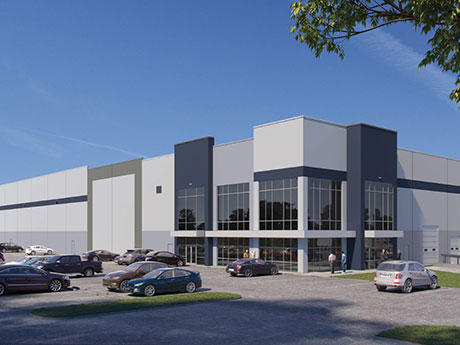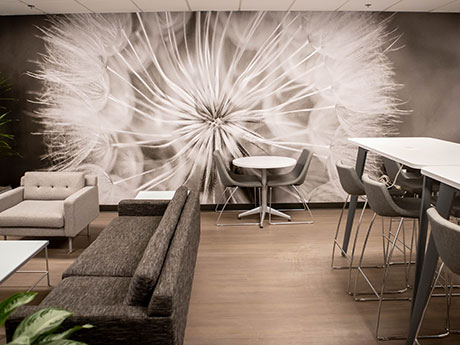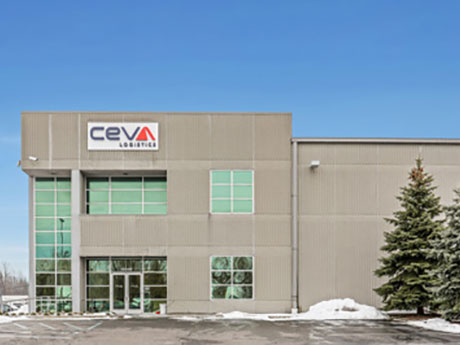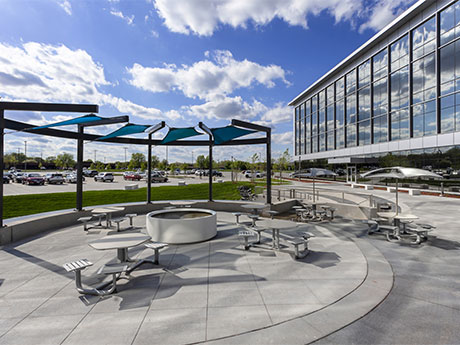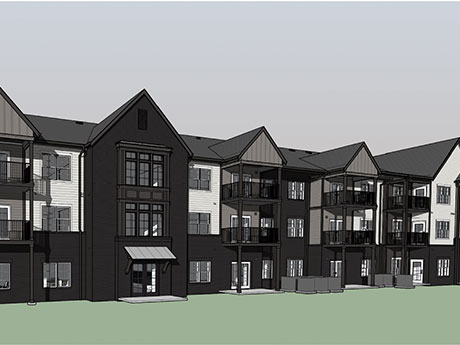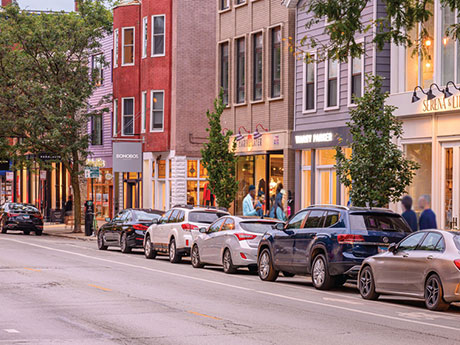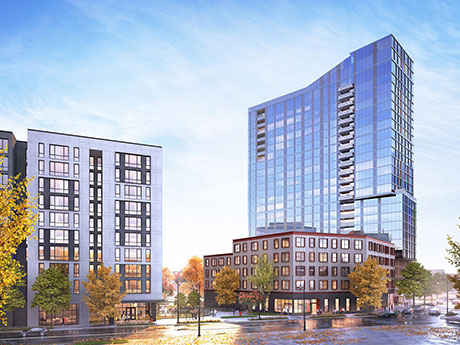By Alec Pacella, NAI Pleasant Valley The Cleveland industrial market enjoyed a strong first half of 2022, characterized by record-low vacancy rates, brisk new construction and increased rental rates and sales prices. Although the market has made several headlines over the first six months, many of these trends began several years ago and the pandemic only accelerated the activity level amongst several key sectors. Market wide, the average vacancy rate was just over 4 percent at the mid-year mark, which is a slight decrease from the 4.5 percent rate at the end of last year. By most accounts, this is a record-low level and represents a decrease of two full percentage points over the last five years. The most popular submarket, the Southeast, which encompasses favored industrial locations such as Solon, Twinsburg, Streetsboro and Aurora, finished the first half with a slightly higher rate of 4.4 percent. However, this market has also seen significant new construction, including a predominance of speculative projects. The submarket with the lowest vacancy rate is the Southwest, which stretches from Middleburg Heights through Medina, checking in at 3.7 percent. At the other end was the downtown submarket. Characterized by a significant amount of older properties, …
Midwest Market Reports
By Douglas Laird and Karl Hoffman, Skogman Commercial Realty Last year’s article on Cedar Rapids began by describing the 2020 Derecho windstorm that brought major damage to Iowa. This included our entire city of Cedar Rapids — an area of 75 square miles. There has been good progress toward recovery; yet many homes and businesses are still in need of repair. In addition, both individuals and companies confront inflation, energy costs and unpredictable consumer costs and shortages. In spite of these hurdles, however, the growth in the multifamily, residential and industrial sectors matches national trends. National rankings are exemplary for the city of Cedar Rapids: • No. 10 in “Best Cities to Buy a House in America” • No. 18 in “Cities with the Lowest Cost of Living in America” • No. 3 in the list of “Top 20 Fastest Metro Areas to Save for Your First Home” The multifamily sector has many exciting new projects in the pipeline totaling over $100 million. Here are just a few: • First on First West: a mixed-use site along First Avenue West • Loftus Lumber site: a five-story building with 186 market-rate units • KCG Development at Jacolyn Drive SW Land sales …
By Ryan Nierman, Ph.D. and Bradley Meloche, Colliers The tumultuous events of the last two years have brought uncertainty into many aspects of Detroit’s office market. Even as companies emphasize their eagerness to return to the office, many questions remain regarding space designs, required square footage and buildout requirements. Tenant selectivity With increasing vacancy rates and negative net absorption throughout the metro Detroit office market, real estate experts are witnessing tenants becoming more selective in property occupancy. The result has been a slowing demand for Class B and C office product. Tenants have begun targeting Class A assets with improved visibility, signage, modernized color schemes, numerous amenities and flexible floorplan designs. As the need for larger office footprints goes down in reaction to post-COVID considerations, tenants have become willing to pay increased per-square-foot rents, for at or below preexisting rental budgets, due to decreased size requirements. The need for tenants to target Class A facilities has been compounded by the so-called “Great Resignation,” as employees are willing to demand more from their employers. As a result, employers know that a failure to invest in a more modern and amenitized workspace may result in poor employee retention and future talent recruitment. …
By Anthony Avendt, Cushman & Wakefield Like most markets in the U.S. and Canada, Detroit’s industrial sector has seen its ups and downs. Detroit’s always been a bit of an outlier though due to extreme volatility. What’s more, we’ve (hopefully) learned lessons from past downturns that well position the city and its commercial real estate regardless of continued strong demand and rent growth or any bumps in the road we may encounter. Detroit is a little different from similar-sized markets in the region. First, while it’s certainly part of the U.S. heartland, the city’s geographic position on a peninsula means it’s poorly suited for broad distribution to large swaths of the country. Second, of course, is the auto industry’s impact. The auto industry is widely dispersed across the U.S. now, but Detroit and Michigan remain its heart and brain. As the sector pivots to autonomous and electric vehicles, that is going to drive demand for industrial space. Ford already has announced an investment of $40 to $50 billion over the next decade-plus, including redevelopment of Michigan Central Station as anchor of its Mobility Innovation District. Stellantis, the parent of Chrysler, Jeep and Dodge, has announced its own $35.5 billion investment …
By Richard Meder, Colliers While office markets across the country have experienced a slow climb back to normalcy following COVID-19-related restrictions, the Dayton office market has found its strength in the Wright-Patterson Air Force Base (WPAFB). Though the Dayton office market around WPAFB experienced similar ebbs and flows as that of the rest of the country during the pandemic, business never stopped. For some in other markets, the lasting effects of this disruption to the office market remain unknown. Business leaders must decide whether to implement a remote work lifestyle into their employee regimen or make a push to get back to normal office life — for some companies it is considered a hybrid approach. For the tenants in the WPAFB submarket, however, there was never question. While many office tenants vacated their spaces out of uncertainty, defense contractors cautiously occupying office spaces at the WPAFB submarket almost singlehandedly helped Dayton remain upright during the pandemic. With the submarket almost entirely consisting of defense contractors, this type of defense contracting work was not allowed to stop with the rest of the world. Having to adhere to both local and federal guidelines, decision-making among defense contractors certainly slowed, but it never …
By Mark Volkman and Brian Leonard, JLL It’s no secret the industrial market has seen a monumental surge throughout the nation as a result of changing consumer behaviors. How developers in each city are combatting the demand, though, is a different story. The success of the industrial market in Cincinnati, in particular, stems from its affordable cost of living, strong labor pool and impressive accessibility. With the city being only an eight-hour drive away from half of the country, it’s become a viable option for tenants with a large footprint that want a lower-cost facility compared with the price of those in major cities like Chicago, New York City or San Francisco. Like other cities throughout the U.S., Cincinnati’s successes have come with both challenges and a variety of emerging trends. Learn about some of the most prominent ones below. 1. The emergence of the Cincinnati-Dayton metroplex With the heightened demand for industrial space comes the need for developers to find land not only in the city, but in its suburbs, as well. Dayton, a city about one hour north of Cincinnati via Interstate 75, has surfaced as a strong option for developers. Proctor & Gamble’s 1.8 million-square-foot distribution center, …
By Chris Curran and Alexa Strickler, R&R Realty Group It’s no secret that the past couple of years have been dramatically different for us all. We’ve had to adjust to new routines, new practices and new ways of getting work done. Some of these new things will be here to stay while others have already receded into memory. No matter the amount of change though, one thing remains the same. That’s the need for human connections and relationships. And, ultimately, that’s what physical office space provides. It seems many organizations are starting to understand just how valuable this connection truly is. Across various submarkets within the Des Moines metro area, companies large and small are returning to in-person work. And it’s not just existing customers returning to their spaces. There has been a marked uptick in office leasing activity in locations ranging from downtown to the western suburbs. From advertising agencies to accounting firms and more, the vacancy rate across the entirety of central Iowa is beginning to be chipped away. Why are so many companies across a wide variety of industries heading back to the office? Well, like we mentioned earlier, there’s a sense of connection and an ability …
By Ryan Kelly, TWG Development Despite the affordable housing crisis, Des Moines has managed to endure the adverse factors that have caused a boom in housing prices nationwide — but we still have a ways to go. A sustained demand, an influx of business and new projects by national developers all played a role in Des Moines’ multifamily growth over the past two years. Developing Des Moines Home to some of the largest multinational finance and insurance corporations, Des Moines has pioneered Iowa’s growth. The city has also seen population growth — the most recent census revealed that Des Moines’ suburbs led to Iowa’s development while the city itself grew by 5.4 percent. Des Moines is the 10th-best place for business and careers, according to Forbes, and ranked as the fifth-best city to live in, according to U.S. News and World Report. The capital city has experienced a boom in employment, with a rise in the number of high-tech jobs, at a 6.7 percent rate. The Midwest’s low cost of living (7 percent lower than the national average) and Des Moines’ proximity to large cities have contributed to the growth of key industries, including logistics, ag-bioscience, manufacturing, data and insurance. …
By Kelly Nickele, Mid-America As the summer season begins, retailers and restaurateurs in Chicago are scheduling tours for the city’s warmest months of the year, and overall leasing velocity is continuing to increase. Here’s a quick review of the top retail real estate trends in Chicago now. Digitally native brands continue to expand, embracing omnichannel sales strategies. I grew up at Fremont & Armitage in Chicago’s Lincoln Park neighborhood through my high school years. I remember when Aldo, Barbour and Bebe anchored Halsted, and United Colors of Benetton (now Interior Define), American Apparel (now Parachute), Intermix (now Outdoor Voices) and Hanig’s (now Marine Layer), were the mainstays of Armitage. I saw tenants like BCBG relocate from Halsted (now Apotheco Pharmacy) to Armitage (now Serena & Lily), and locals like Art Effect and Lori’s remain relevant while the trade area garnered national attention and the 60614 zip code continued to report strong catalog and ultimately e-commerce sales. I’ve experienced the rise and fall of many retailers, the emergence of digitally native brands, the major shift in how and where we shop and the influence of social media in the retail industry. As a consumer and a retail advisor, I believe in …
By Mike Drew, Structured Development As a longtime developer of multifamily, commercial and mixed-use properties in Chicago, I can tell you we’ve never seen anything like the last few years. From the highs of the pre-pandemic multifamily construction boom to the lows of the first year of COVID-19 lockdowns — when downtown emptied out — to today, it’s been a rollercoaster ride. But the multifamily sector has ultimately proved resilient and is roaring back stronger than ever. Here’s a look back at the past three years and a glimpse of three projects we broke ground on during the pandemic: Schiller Place, Big Deahl and Harrison Row. Early pandemic exodus For the years 2019-2021, developers were expected to build 9,000 apartment units in downtown Chicago, according to Integra Realty Resources. This figure was lower than the expected 10,700 units because of rising construction costs and uncertainty around property taxes, but still strong. Average rents for downtown Class A rental communities were $3.31 per square foot, per Integra, and occupancy was a robust 94.9 percent. When the pandemic hit nine months later, it greatly slowed that activity. Gov. J.B. Pritzker issued the first stay-at-home order on March 20, 2020, followed by other …


